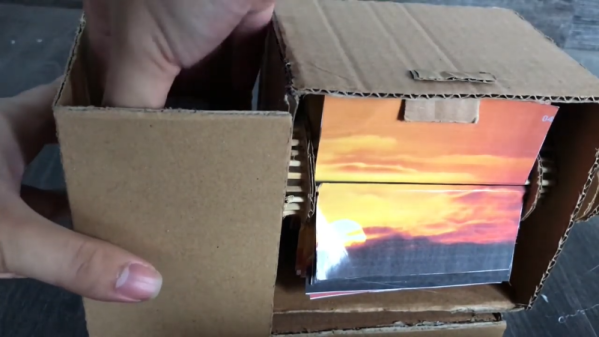[WolfCat] of Wolfcatworkshop is creating a hand-animated split-flap animation. But what do you use to test your animation once it’s on the split-flaps? Well, to test it out, [WolfCat] used a drill to give it motion. DoodlersAnonymous has some pics and an interview with [WolfCat] about his animation and there are some pictures on his Instagram page.
Technically, what [WolfCat] wanted to make is a “mutoscope,” a hand-cranked precursor to the movie projector that had its heyday in the late 19th and early 20th century. Originally installed in penny arcades and the like, mutoscopes were single-viewer apparatus. The viewer cranks the handle and the animated cards inside rotate around, stopped briefly by a bit of metal at the top in order to show a frame. The basic idea is similar to the way split-flap clocks or signs work.
[WolfCat] hand drew the animation for his movie and then scanned and printed out each frame. The frames were then transferred to a pair of flaps. [WolfCat] wanted to see how it would look when animated, but didn’t have any plans at the time for a case or a hand crank, so he found the closest tool that would do the job – a cordless drill. Attaching the drill and using a bit of card or wood as a stopper, [WolfCat] could see how the end result would look and could then start work on the case and crank.
The drill is a quick and easy way to see what the finished product would look like. Once he’s got it working, [WolfCat] could check out this 3D printed mutoscope case, or this flip dot animated display.
Continue reading “Use A Drill To Power Your Flipbooks” →













